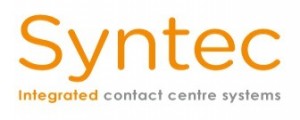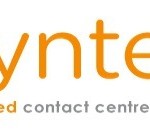
Companies have been offering multiple channels of interaction via their contact centres for several years now. However this move is often driven by cost considerations rather than customer demand. Whilst some interactions are best served by non-voice channels such as email, many merchants deliberately promote email or web chat over voice as it is cheaper to serve, even when it may not be the best channel for a particular interaction or when customers would prefer to actually talk to someone.
Contact centres need to offer the channels that customers want
The channel that customers choose will depend on circumstance and personal preference. They may prefer to telephone rather than use web channels in order to get a personal resolution to a problem or because they cannot find the answer to their specific question online. However the telephone is not a universal panacea either – studies show that 59% of callers are transferred at least once during a call centre interaction and that, of those, over half will then have to re-explain their issue after the transfer, a constant source of frustration for callers.
Other channels which were once popular are now in decline. For example, after more than decade of strong growth, SMS volumes are now falling fast in most developed countries. In the UK, for example, Ofcom reported a 24% decline in text message volumes during 2012-13. At the same time a range of other messaging systems such as WhatsApp, iMessage, Twitter and Facebook have become more vastly more popular, and increasingly users expect to be able to use such systems to communicate with companies as well as with each other.
How do customers choose which channel to use?
Channel choice loosely depends on how much we care about the conversation and how personal the topic is. Customers tend to use public-facing social networks such as Twitter and Facebook as a method of highlighting bad service or for brief transactional questions of a non-personal nature. Email is a popular choice for more formal communication where a considered response is required, but if an instant response is needed then it’s not ideal. When the stakes are high and a quick response is needed then phone or perhaps web chat can work well. At the moment video chat is too personal for most (although it has recently gained good traction in healthcare and finance in the US and in Asia there have been some interesting pilot schemes in the insurance industry).
Tracking customer interactions across multiple contact centre channels
The range of different channels creates opportunities for companies. For example, pushing online FAQ pages and other web-based self-service options can save companies money as well as enabling customers to get the answers they need more quickly than they otherwise might. However the plethora of different channels also creates a big challenge for organisations because customers don’t just stick to one channel. Companies need to think about how to keep track of customer interactions ranging across multiple channels, and how to use the information gained from one channel to inform the way in which another channel operates.
For example, because web chat is normally initiated from within the company website, it is technically fairly simple to capture web session information and pass that to the agent. Sadly few chat systems have this capability and instead a less comprehensive approach is taken where the user is asked to choose a reason for the contact from a drop down list and this is passed to the agent. The opportunity to use information from one channel to improve the customer’s experience of another is not being used.
Linking web browsing information to contact centre interactions
It’s also possible to carry the context of a web interaction into a phone call with an agent by means of dynamic phone number replacement (something that our own ResponseTrack product enables). This is done in the browser and requires only a few lines of JavaScript to be added to the web page template. When the customer loads the page a script runs that fetches a customer services phone number which is unique to the caller and replaces the original phone number in the page. When the call is delivered to the agent, the system looks up the detail of the web session associated with the number being called and passes that information to the agent. It is also possible to achieve the same effect by generating a unique customer service code on the web page and having the caller either read this out to the agent or enter it on IVR before connection to the agent. In either case it’s also possible to use information from the web session to route the call to an appropriate team in the call centre.
The future of video chat in contact centres
The next generation of browser based (and indeed app based) communication is WebRTC. The system allows high quality peer-to-peer video calls (as seen in Google hangouts and Amazon Mayday), but can also be used purely for speech. I predict that in the next 12 months we will start to see mainstream brands offering it as an extra contact centre channel in the UK. When used from a merchant’s web site it will greatly simplify the transmission of call context to agents, allowing them instant access to the user’s web interaction in the minutes leading up to the call. It also opens the way for plugin-free co-browsing with annotation and document push so we are likely to see these hitherto exotic services becoming relatively commonplace. As more people are able to access higher broadband speeds and mobile data charges fall, two of the biggest barriers to video calling will be removed. It will be interesting to see how both consumers and call centre staff react to the new rich media interactions that are just around the corner.
 Colin Westlake – Managing Director Syntec
Colin Westlake – Managing Director Syntec
After studying Physics at Oxford, Colin joined Decca-Racal where he worked on part of the guidance system for the Sea Wolf sea-to-air missile system. He then joined Schlumberger wireline services where he worked in the field in South America, gathering and interpreting geophysical data from oil and gas exploration wells. He spent time in a number of very remote locations running small teams engaged in time and mission critical services in a high pressure environment. On his return to the UK he spent some years in property development before returning to his technical roots joining Syntec in the first year of its life.

 Colin Westlake – Managing Director Syntec
Colin Westlake – Managing Director Syntec



